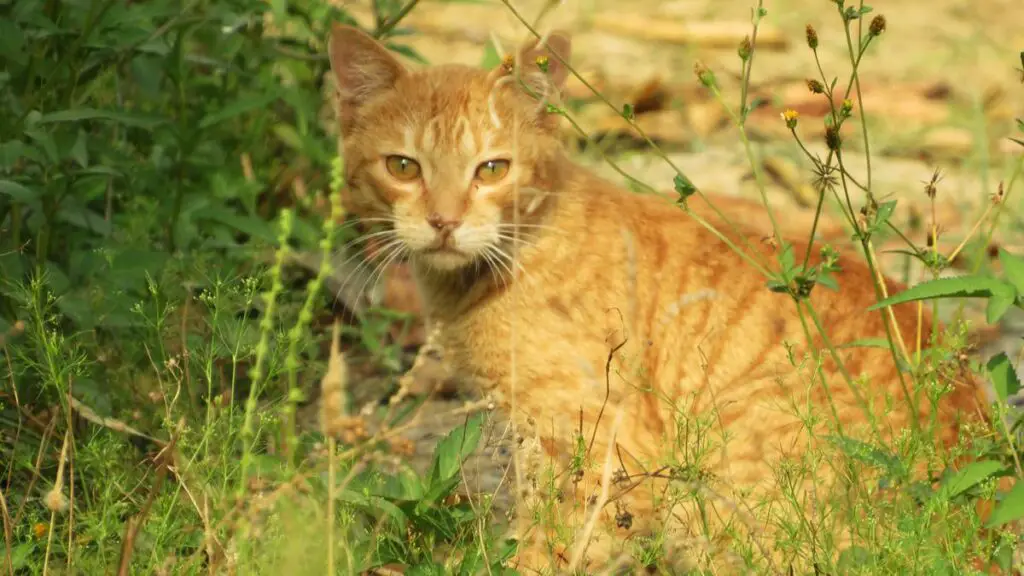Birds in India are facing a significant decline, as highlighted by the recent “State of Indian Birds 2023” exercise, which collected data from over 30 million observations by more than 30,000 birdwatchers. While threats like forest degradation, industrialization, and climate change are well-known, there is another silent killer lurking in India’s urban areas: cats.
Although cats may not appear as alarming as these other factors, conservationists understand their impact. In the United States alone, free-ranging domestic cats have been estimated to kill billions of birds each year. In fact, a study found that cats may be the primary cause of anthropogenic mortality for birds and mammals in the U.S. Around the world, free-ranging domestic cats have contributed to the extinction or endangerment of numerous bird species listed in the IUCN Red List.
Recognizing the lack of India-specific data on the issue, ecologist Monica Kaushik has been studying the hunting habits of free-ranging domestic cats on urban birds in Dehradun. The city is home to 590 out of the 1,359 bird species recorded in the country. Through her survey, Dr. Kaushik found that pet cats preyed on birds most frequently, followed by reptiles, insects, rodents, and amphibians.
While free-ranging dogs also pose a threat to wildlife, cats have retained their hunting instincts throughout years of domestication, even if they no longer require these skills. Cats have an advantage over dogs as they can climb and reach habitats like the nests of canopy-dwelling birds. Additionally, cat saliva is more likely to contain bacteria, such as Pasteurella multocida, which can be lethal to birds. If the immediate impact of an attack doesn’t kill them, the bacteria can.
Abhisheka Krishnagopal, a former urban wildlife rescuer, has noticed that most cat-attacked birds do not survive the journey to a treatment center. This is likely due to the presence of bacteria in cat saliva. Furthermore, cats create a “landscape of fear” for birds. When birds are aware of the presence of cats in a specific area, they avoid foraging or nesting there. This behavior forces birds to expend additional time and energy to remain vigilant and search for alternative areas, impacting both individual birds and population levels.
Addressing the cat problem has sparked a contentious debate in the Western world. Animal welfare groups often advocate for the “trap-neuter-return” (TNR) policy, where stray cats are captured, sterilized, and released to decrease their population. This approach is considered humane, as it improves the quality of a cat’s life. However, trapping cats is not an easy task, and unless a significant number of cats are sterilized simultaneously, the population will not decrease sustainably. TNR programs worldwide have had limited success due to these challenges.
Peter Marra, a former director of the Smithsonian Migratory Bird Center, criticizes policies like TNR for being focused on animal welfare instead of ecological impacts. In his study published in Nature Communications in 2013, he suggested that only a concerted, nationwide effort to remove cats from the landscape can effectively address the issue, which could include euthanasia.
In India, the debate surrounding the cat problem has not yet gained significant attention, largely due to the lack of data. With the “State of Indian Birds 2023” report outlining the precarious state of bird diversity in India, ecologists like Dr. Kaushik are calling for more research to quantify the risks posed by various threats, including cats. It is crucial to conduct studies in different habitats where high mortality rates are expected due to free-ranging cats.
Wildlife rehabilitation centers can serve as a valuable source of data, according to Abhisheka Krishnagopal. She suggests fostering collaboration between researchers and animal welfare organizations, encouraging rehab centers to collect information on cat-attacked birds they receive. By publishing and analyzing this data, awareness can be raised based on evidence.
In the meantime, there are measures that pet owners can take to minimize the damage caused by their cats. Restricting outdoor movements, playing with cats, and neutering them have been found to reduce hunting behavior. Additionally, studies have shown that cats with a higher protein diet are less likely to hunt. Reflective collars or collars with bells can also alert birds to the presence of a nearby cat.
While cats pose a threat to wildlife, Seema Mundoli, a sustainability teacher at Azim Premji University, believes in showing empathy towards stray cats. She suggests that conservation and animal rights groups unite their resources to find a solution that benefits both populations. The common goal is to ensure controlled and healthy populations of cats and protect the natural world.
In conclusion, the “State of Indian Birds 2023” report highlights the concerning decline of bird populations in India. While cats may not appear as significant as other threats, their impact on bird species should not be overlooked. More research and data are required to understand the specific risks posed by cats in different habitats. Finding a solution to the cat problem will require collaboration between various stakeholders, focusing on population control and the well-being of both cats and wildlife.

